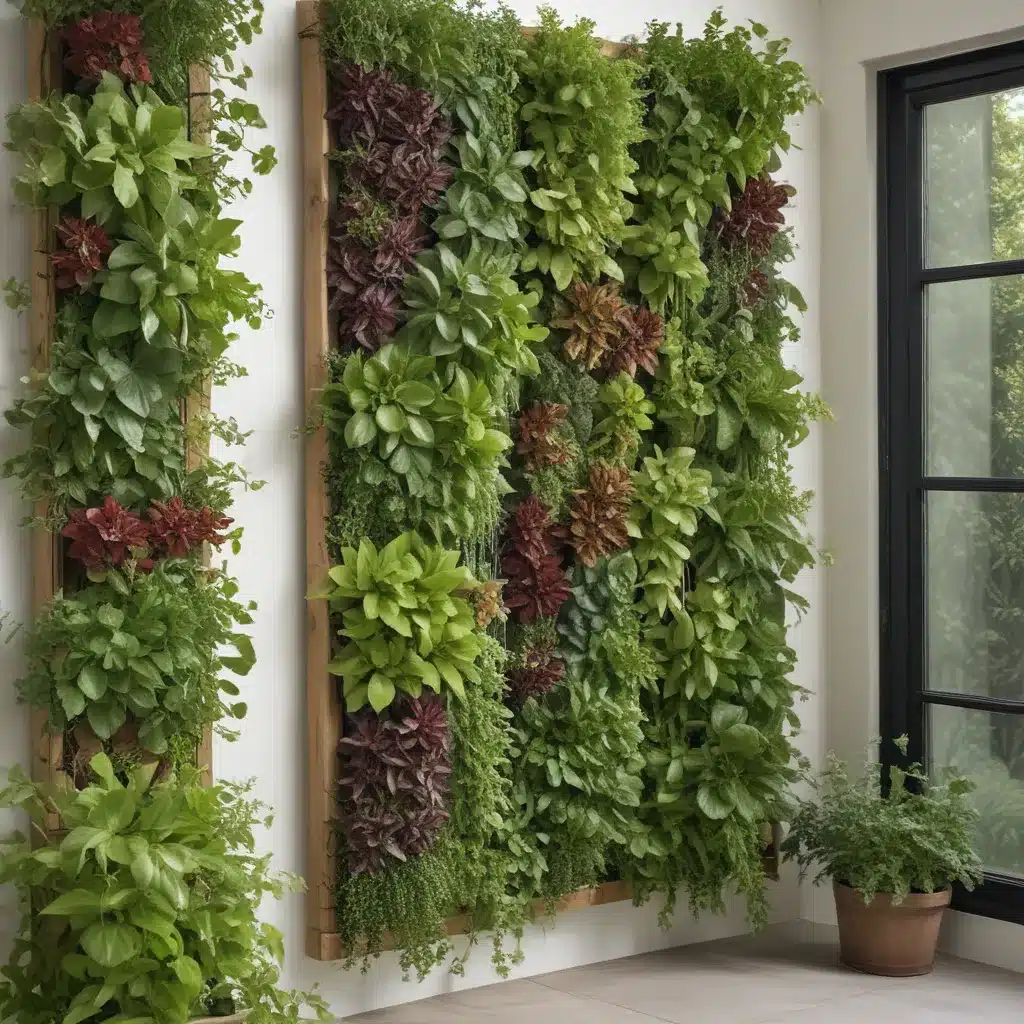
The Rise of Vertical Gardening
As an avid gardener and nature enthusiast, I’ve always been fascinated by the way we can integrate greenery into our lives, even in the most urban of settings. And as I’ve been keeping a close eye on the latest landscaping trends, one technique has really caught my attention: vertical gardening.
It’s no secret that space is at a premium, especially in cities like Aberdeen, where garden plots can be few and far between. But vertical gardening offers a creative solution that allows us to maximize our growing potential and transform our surroundings into lush, verdant oases.
According to the experts at Blooming Secrets, vertical gardening is expected to be one of the top garden trends for 2024. And as I’ve delved deeper into this innovative approach, I can see why it’s capturing the hearts and imaginations of gardeners near and far.
Embracing Vertical Space
The beauty of vertical gardening lies in its ability to turn what might otherwise be wasted space into a lush, thriving oasis. By utilizing walls, fences, trellises, and other vertical structures, we can cultivate a diverse array of plants without sacrificing precious square footage on the ground.
It’s a bit like going on a hike through a towering forest – you’re surrounded by greenery, but your gaze is drawn upwards, taking in the intricate canopy of leaves and flowers. That’s the magic of vertical gardening – it allows us to experience the beauty of nature from a whole new perspective.
And the best part? It’s a versatile technique that can be adapted to suit any space, whether you’re working with a small balcony or a sprawling rooftop garden. As the Heartland Gardening blog notes, vertical gardening can take many forms, from fabric pockets and cement blocks to potted plants along a fence.
Maximizing Your Growing Potential
One of the key advantages of vertical gardening is its ability to increase your growing capacity. Rather than being limited by the confines of a traditional garden bed, you can leverage the vertical space to cultivate a diverse array of plants, from trailing vines to towering shrubs.
Imagine a lush, green wall adorned with cascading flowers, or a towering trellis supporting a bountiful harvest of tomatoes and cucumbers. The possibilities are truly endless, and the visual impact can be nothing short of breathtaking.
But it’s not just about aesthetics – vertical gardening also offers practical benefits. By growing upwards, you can free up valuable ground space for other uses, whether that’s a cozy seating area, a play space for the kids, or a designated spot for your compost bin.
And as the team at Green.org points out, vertical gardens can even help to improve air quality, as the plants work to filter out pollutants and release fresh oxygen into the atmosphere.
Cultivating a Sustainable Future
But vertical gardening isn’t just about aesthetics and practicality – it’s also a key component in the push for a more sustainable future. By growing our own food and herbs vertically, we can reduce our reliance on long-distance supply chains and minimize our carbon footprint.
Imagine stepping out onto your balcony or rooftop and plucking fresh, juicy tomatoes or fragrant herbs for your dinner – it doesn’t get much more local and eco-friendly than that. And as the Brecks blog suggests, the rising popularity of “edimentals” (plants that are both edible and ornamental) is making this dream a reality for more and more gardeners.
But the sustainability benefits of vertical gardening don’t stop there. By incorporating native plants and water-wise techniques, we can create verdant, low-maintenance gardens that support local ecosystems and reduce our reliance on precious resources like water.
Fostering Community and Connection
As I’ve explored the world of vertical gardening, I’ve been struck by the way it can bring people together and foster a sense of community. Whether it’s sharing tips and tricks with fellow gardeners or organizing vertical gardening workshops, there’s a real sense of camaraderie and collaboration in this space.
And let’s not forget the educational component. By showcasing vertical gardens in public spaces, we have the opportunity to inspire and educate the next generation of green thumbs. Imagine a vertical garden adorning the walls of a local school or community center, teaching kids about the importance of sustainable living and the wonders of the natural world.
In fact, research has even suggested that interacting with vertical gardens can have a positive impact on mental health, reducing stress and promoting a sense of calm and well-being.
So, whether you’re a seasoned gardener or a complete novice, I encourage you to embrace the transformative power of vertical gardening. By harnessing the potential of our walls and fences, we can create vibrant, sustainable spaces that not only nourish our bodies, but also our hearts and minds.
And who knows – perhaps your vertical garden will be the catalyst that inspires your neighbors to get out there and start growing, too. After all, as the saying goes, “when you have a garden, you have the world.” And with vertical gardening, we can bring that world a little closer to home.
















